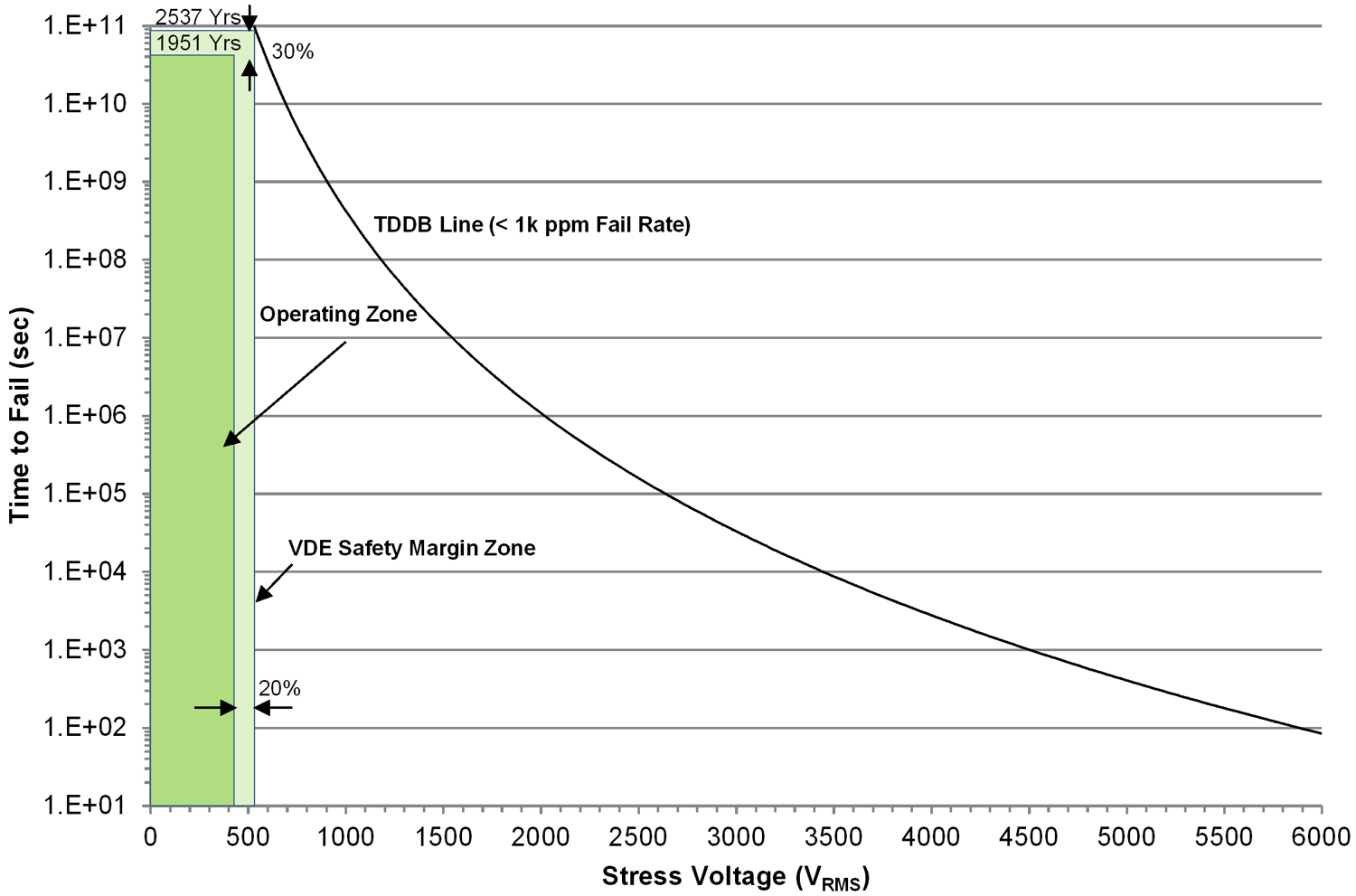ZHCSM20 June 2021 TMCS1100-Q1
PRODUCTION DATA
- 1 特性
- 2 应用
- 3 说明
- 4 Revision History
- 5 Device Comparison
- 6 Pin Configuration and Functions
- 7 Specifications
- 8 Parameter Measurement Information
- 9 Detailed Description
- 10Application and Implementation
- 11Power Supply Recommendations
- 12Layout
- 13Device and Documentation Support
- 14Mechanical, Packaging, and Orderable Information
9.3.2 Input Isolation
The separation between the input conductor and the Hall sensor die due to the TMCS1100-Q1 construction provides inherent galvanic isolation between package pins 1-4 and pins 5-8. Insulation capability is defined according to certification agency definitions and using industry-standard test methods as defined in the Section 7.6 table. Assessment of device lifetime working voltages follow the VDE 0884-11 standard for basic insulation, requiring time-dependent dielectric breakdown (TDDB) data-projection failure rates of less than 1000 part per million (ppm), and a minimum insulation lifetime of 20 years. The VDE standard also requires an additional safety margin of 20% for working voltage, and a 30% margin for insulation lifetime, translating into a minimum required lifetime of 26 years at 509 VRMS for the TMCS1100-Q1.
Figure 9-1 shows the intrinsic capability of the isolation barrier to
withstand high-voltage stress over the lifetime of the device. Based
on the TDDB data, the intrinsic capability of these devices is 424
VRMS with a lifetime of
> 100 years. Other factors
such as operating environment and pollution degree can further limit
the working voltage of the component in an end system.
 Figure 9-1 Insulation Lifetime
Figure 9-1 Insulation Lifetime